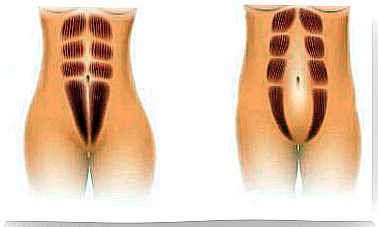Bronchitis And Pneumonia: How Are They Different?
Both bronchitis and pneumonia are respiratory diseases. Both can have similar symptoms. Despite this, they are not caused by the same phenomena, nor are they prevented or treated in the same way.
How to recognize one condition or another? What are your symptoms? Solving these questions is important when you have any of these diseases. Next, we detail their main differences.
What is pneumonia?
Pneumonia is a respiratory disease that consists of the infection of the lung tissue. It can be produced by different pathogens, which can be different fungi, viruses or bacteria.
Therefore, it usually occurs in seasonal peaks, when weather conditions favor the presence of these microorganisms. Pneumonia is usually a more complicated condition than bronchitis.

What is bronchitis?
Bronchitis, for its part, is inflammation of the lung tissue. It is usually milder than pneumonia. This disease is often caused by some types of viruses or by other agents that can irritate the airways.
The clearest example of an irritant of the respiratory tract is tobacco, which is why it is more common in smokers. As it is caused by irritants, and not only by pathogens, it can sometimes become chronic.
What are the symptoms of both diseases?
Although, as we have commented, it is more normal for the pneumonia picture to become complicated, both pathologies present quite similar symptoms. In both, there is a sensation of shortness of breath and suffocation, which is known as dyspnea.
Symptoms also include coughing up, which means mucus or phlegm is passed. There may be general malaise, a sore throat and head, and a runny nose.
What are the differences between bronchitis and pneumonia?
As we have already mentioned, one of the differences between the pathologies is the causative agents. Bronchitis is caused by viruses or other agents that irritate the airways. In contrast, pneumonia is an infection of the lung tissue by viruses, fungi, or bacteria.
In addition to the cause, we also found a few different symptoms. One of the most characteristic is fever. Pneumonia, being an infection, usually presents high fevers for a few days, in addition to a general malaise and muscle pain much more accentuated than in bronchitis.
It is also common for pneumonia to manifest with chills, tremors, and sweating. Meanwhile, in bronchitis it does not usually give fever. The duration is variable in both. With proper treatment, pneumonia can be overcome in a period of two weeks.
On the other hand, the symptoms of bronchitis can last more or less time, depending on its cause. Thus, if it is caused by viruses, it can improve after 1 or 2 weeks. On the other hand, if it is caused by tobacco, and the patient does not stop smoking, it becomes a chronic and long-lasting problem.

How to prevent and treat these diseases?
In the case of bronchitis, treatment will be based on relieving symptoms with mucolytics, anti-inflammatories or analgesics. In the event that it is produced by an irritant agent, it will be necessary to avoid exposure to it. For example, the patient will have to give up tobacco.
In contrast, pneumonia may require several types of medications; pain relievers and fever reducers to control some of your symptoms, and antibiotics if it is caused by bacteria. The choice between one antibiotic or another depends precisely on the type of causative bacteria.
For its prevention, especially in the case of bronchitis, it is advisable to avoid tobacco consumption. In addition to that, annual flu vaccination and pneumococcal vaccination are recommended.
Differences between bronchitis and pneumonia: what should be clear?
Although both are respiratory diseases that can cause very similar conditions, they do not have the same cause, nor are they treated in the same way. At first, it can be difficult to distinguish between one disease and another.
Therefore, before any warning symptoms, it is best to seek medical attention. The professional, through the pertinent tests, can establish a diagnosis to choose the most appropriate treatment according to the case.








